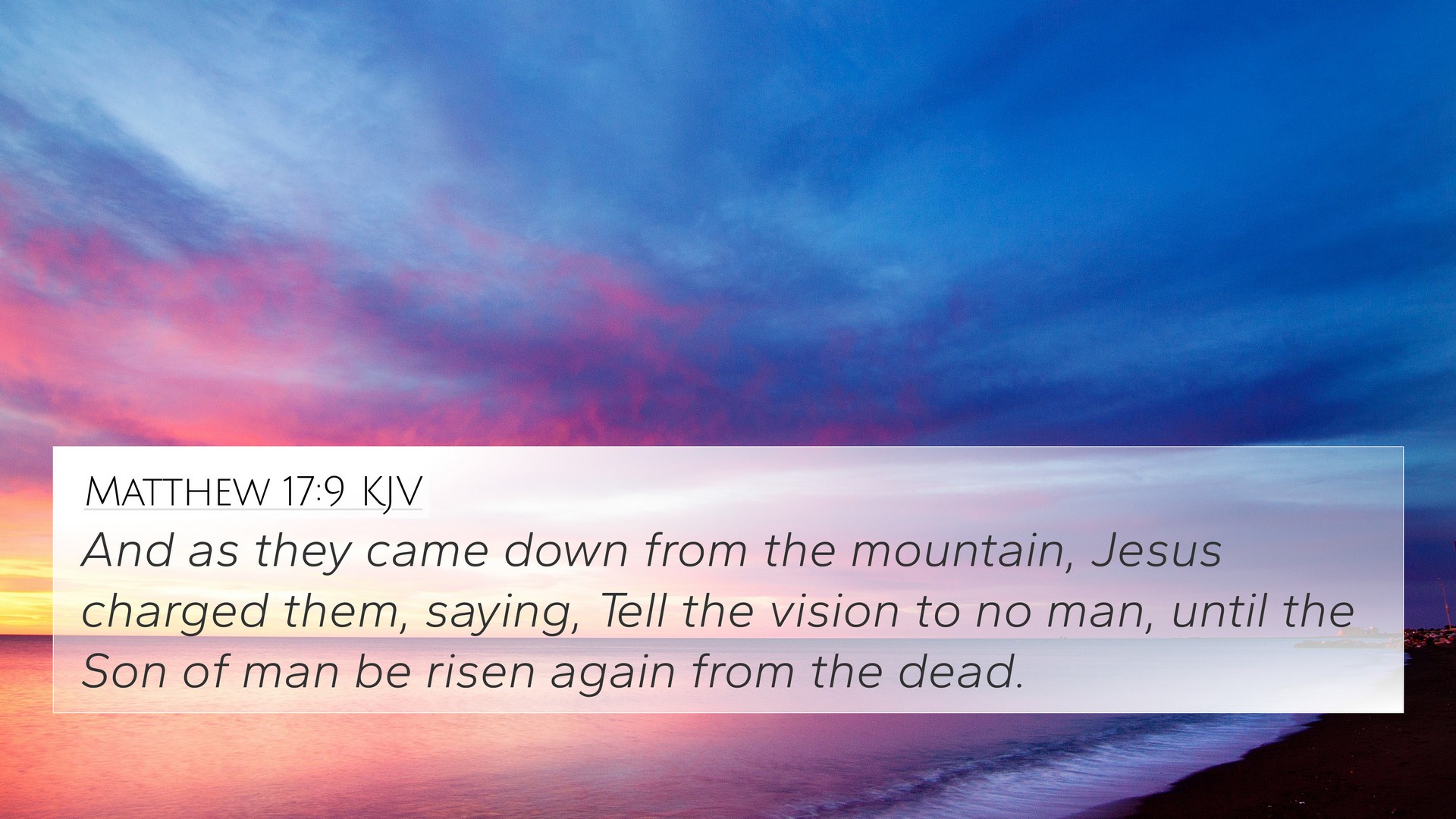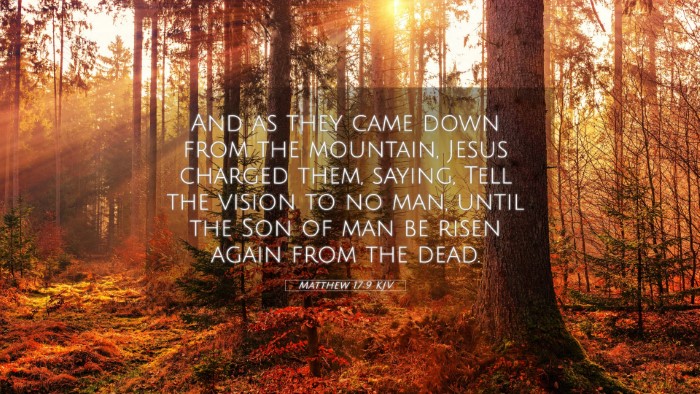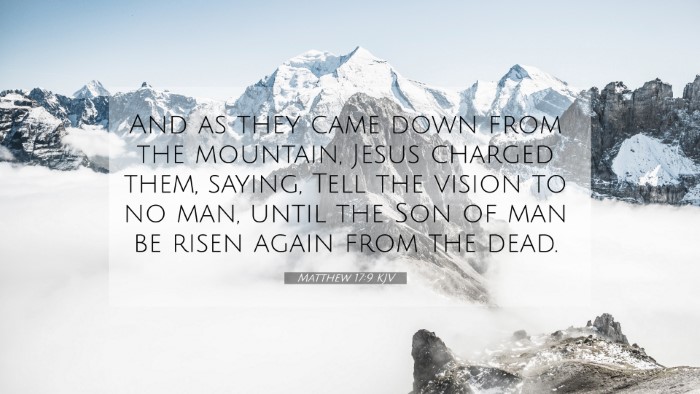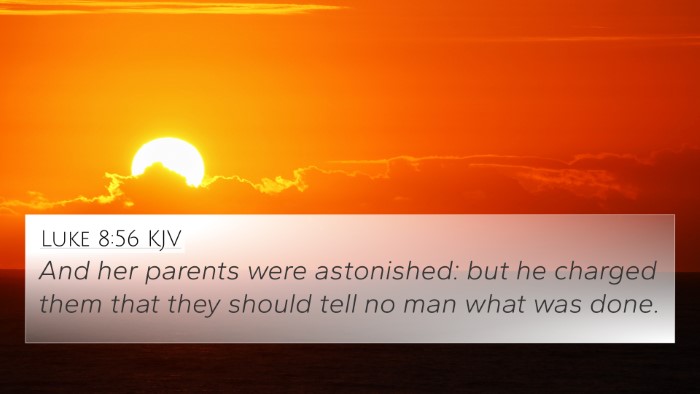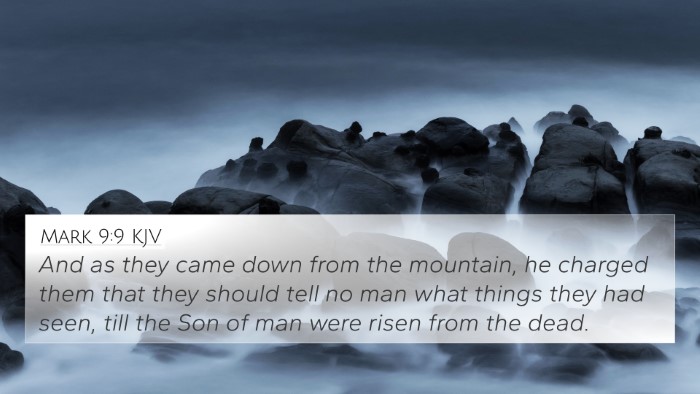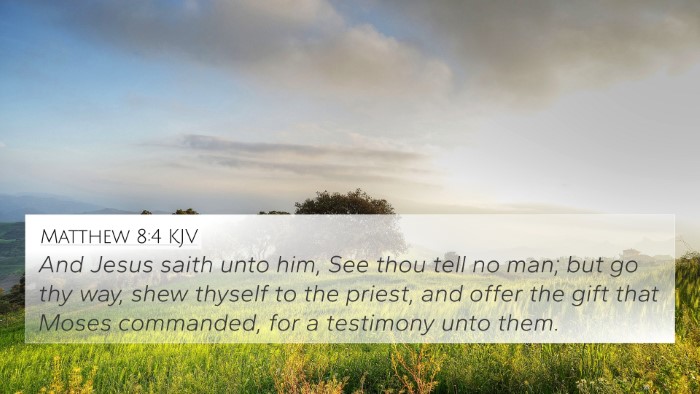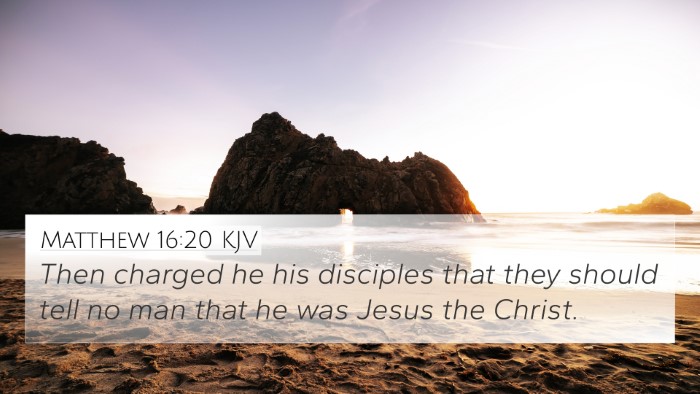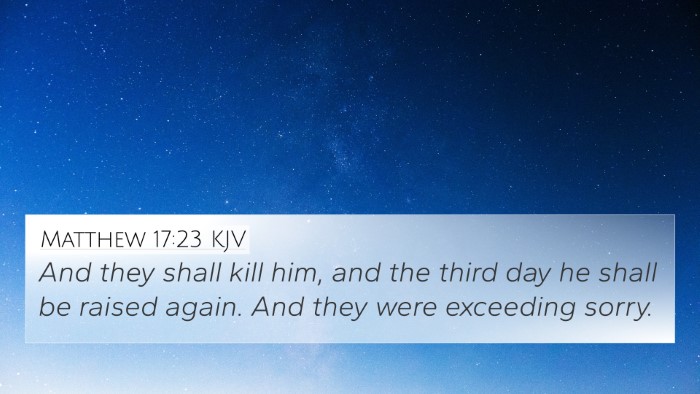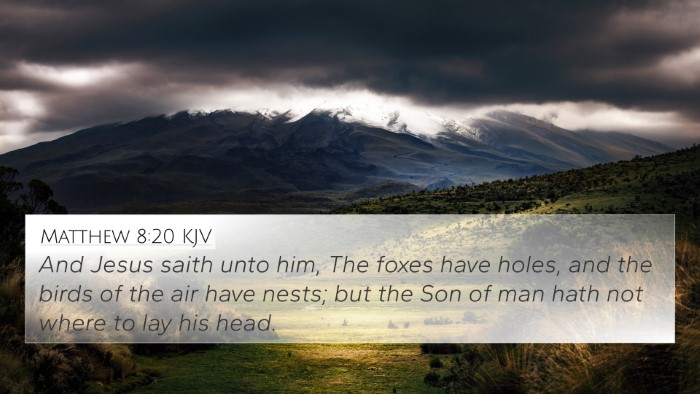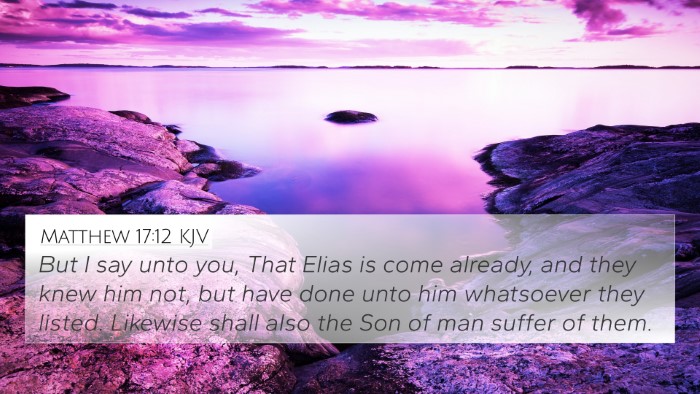Understanding Matthew 17:9
Matthew 17:9 states: "As they were coming down from the mountain, Jesus commanded them, saying, 'Tell the vision to no man until the Son of man be risen again from the dead.'" This verse occurs after the Transfiguration of Jesus and serves significant theological and interpretive purposes. Below is a fused analysis based on insights from Matthew Henry, Albert Barnes, and Adam Clarke.
Context of the Verse
This verse takes place immediately after Jesus displays His divine glory to Peter, James, and John on the mount, which highlights His identity as the Son of God. The command from Jesus to remain silent about the vision until His resurrection is crucial in understanding the timing of revelation in the ministry of Christ.
Key Themes in Matthew 17:9
- The Importance of Timing: Jesus instructs His disciples to wait before sharing their experience, signifying that there is an appropriate time for revelations to be made known.
- Expectancy of the Resurrection: This command alludes to the resurrection of Jesus, which is a pivotal event in Christian theology. The disciples are reminded that their understanding of His glory will be fully revealed only through His death and resurrection.
- Divine Instruction: The directive reflects Jesus' authority and emphasizes the necessity of obedience to His instructions, highlighting the trust required of His followers.
Commentary Insights
Matthew Henry's Commentary: Henry emphasizes the necessity of spiritual discernment. He notes that the command to discuss the vision only after the resurrection reinforces that spiritual truths are often unveiled gradually. The disciples’ experience is not yet ready for public revelation, illustrating a theme of cautious dissemination of divine truths.
Albert Barnes' Notes: Barnes suggests that the vision presented was appointed to be a private revelation, meant to strengthen the disciples' faith amid future trials. The command to silence was to ensure that the transformative experience would not lead to premature disclosure that might confuse or mislead the public perception of Jesus’ mission.
Adam Clarke's Commentary: Clarke finds it significant that Jesus prioritizes the resurrection in this command, serving as a foreshadowing of the transformation that comes through His resurrection power. He argues that while transformation (as seen in the vision) is vital, it hinges upon the forthcoming events of the crucifixion and resurrection.
Bible Cross-References
This verse can be understood more deeply through various links within Scripture. Here are notable cross-references:
- Matthew 16:21: Jesus predicts His death and resurrection, showing the connection to the understanding of His messianic role.
- Luke 9:30-31: Similar account of the Transfiguration, provides insight into the heavenly confirmation of Jesus’ purpose.
- Mark 9:9: Echoes Matthew 17:9; both accounts highlight the command to secrecy and its implications.
- John 2:19-22: Jesus speaks of His death and resurrection, illustrating that understanding only comes after these events.
- Acts 1:3: References the resurrection of Jesus further emphasizing the significance of this manifestation of His glory.
- 1 Corinthians 15:4: Paul discusses the resurrection, indicating its importance in Christian doctrine.
- Philippians 3:10-11: Emphasizes the desire to know Christ and the power of His resurrection, linking personal transformation to His resurrection.
Connections Between Bible Verses
Understanding Matthew 17:9 can greatly enhance our knowledge of the New Testament. By cross-referencing, we can identify how themes of revelation, resurrection, and obedience interconnect across scripture:
- Themes of Revelation: The Transfiguration (Matthew 17) signifies a key moment of divine revelation, echoing in the Old Testament experiences of Moses (Exodus 34), who also had encounters with God on a mountain.
- Resurrection Expectancy: This motif appears throughout scripture (e.g., Job 19:25-26), culminating in the New Testament affirmation of Jesus as the risen Lord.
- Obedience to God's Command: The necessity of following Jesus’ instruction can also be illustrated in the Old Testament, such as in Moses’ responses to God during the Exodus (Exodus 3).
Tools for Bible Cross-Referencing
For those interested in deepening their study and understanding of the scripture, various tools can assist in cross-referencing biblical texts:
- Bible Concordance: A resource that lists words found in the Bible and provides their occurrences to see contextual relationships.
- Bible Cross-Reference Guide: Guides that offer connections between verses that illuminate thematic parallels and doctrinal truths.
- Cross-Reference Bible Study: A method of studying scripture that involves comparing passages to develop a more comprehensive understanding.
- Bible Reference Resources: Tools that can provide insight and context for scripture interpretation.
Conclusion
Matthew 17:9 encapsulates vital teachings regarding the timing of divine revelations, the expectation of resurrection, and the necessity for obedience to God's voice. By engaging in scriptural cross-referencing, we find connections that further illuminate our understanding of this passage and integrate it into the broader narrative of the Bible.
